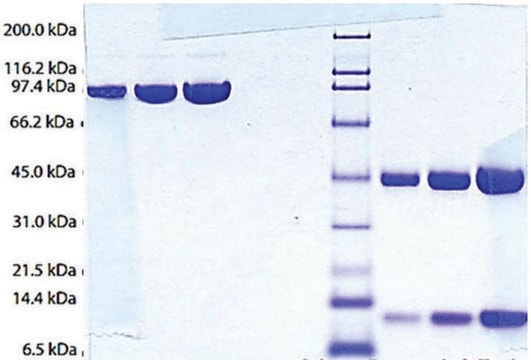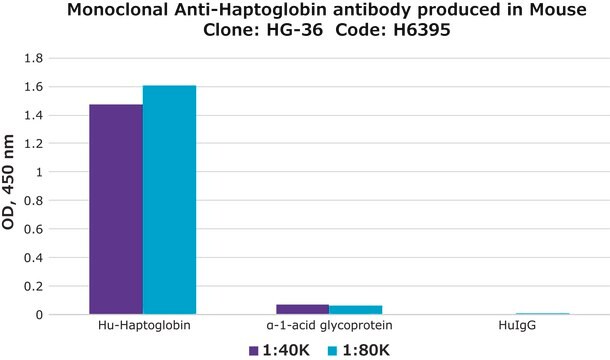H8636
Anti-Haptoglobin antibody produced in rabbit
IgG fraction of antiserum, lyophilized powder
Sinónimos:
Anti-BP, Anti-HP2ALPHA2, Anti-HPA1S
About This Item
Productos recomendados
biological source
rabbit
Quality Level
conjugate
unconjugated
antibody form
IgG fraction of antiserum
antibody product type
primary antibodies
clone
polyclonal
form
lyophilized powder
species reactivity
human
packaging
vial of 2 mL lyophilized antiserum
technique(s)
indirect ELISA: 1:30,000
UniProt accession no.
application(s)
research pathology
storage temp.
2-8°C
target post-translational modification
unmodified
Gene Information
human ... HP(3240)
General description
Immunogen
Application
Biochem/physiol Actions
Physical form
Reconstitution
Disclaimer
Not finding the right product?
Try our Herramienta de selección de productos.
Storage Class
11 - Combustible Solids
wgk_germany
WGK 3
flash_point_f
Not applicable
flash_point_c
Not applicable
ppe
Eyeshields, Gloves, type N95 (US)
Certificados de análisis (COA)
Busque Certificados de análisis (COA) introduciendo el número de lote del producto. Los números de lote se encuentran en la etiqueta del producto después de las palabras «Lot» o «Batch»
¿Ya tiene este producto?
Encuentre la documentación para los productos que ha comprado recientemente en la Biblioteca de documentos.
Nuestro equipo de científicos tiene experiencia en todas las áreas de investigación: Ciencias de la vida, Ciencia de los materiales, Síntesis química, Cromatografía, Analítica y muchas otras.
Póngase en contacto con el Servicio técnico








